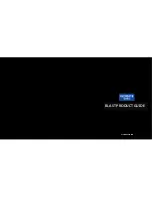
3
OPERATION AND TROUBLESHOOTING GUIDE
HYDRAULIC CONNECTION
After you have correctly connected your power unit to an appropriate power supply, you must fill the tank with a suitable
hydraulic oil.
Eagle Hydraulic recommends:
ISO 32, filtered to 20 microns or better
After the tank is filled, you must start the pumping system and bleed out all the air for a smooth system operation.
Bleeding of the system must be made by cracking the line to the highest point up from ground. Briefly operate the power
unit until all air is expelled from the supply line and a clear stream of oil flows out.
Once a continuous stream of fluid is visible, without evidence of air, the supply line should be tightened, and the power
unit should be switched off.
If you have multiple actuators, it is recommended to bleed each one of them. Once they all have been bled of air, they
should be fully retracted and the level of oil in the reservoir should be checked and adjusted if necessary.
MAINTENANCE
All Eagle Hydraulic power units are designed to give a long, trouble free service life with just a few maintenance checks at
regular intervals.
•
Oil Level: t
he level of oil inside the tank should be verified every day and topped up if necessary. If you see a
change in the need of oil, there might be a leakage in the hydraulic system. Check each adaptor, seal and
hose to identify the source of the leak and rectify.
•
Filtration of the system:
Each system comes equipped with a filtered filler breather to help prevent all
contaminants from the outside to be brought inside the hydraulic oil tank. Since the breather can get clogged
over time, it should be replaced regularly. A suction strainer is also mounted on the intake side of the hydraulic
pump located inside the tank. The suction filter should be replaced as part of a regular maintenance routine.
WE OFFER UP TO 20 DIFFERENT OPTIONS, BELOW ARE OUR MOST POPULAR VERSIONS
OPTION 1
OPTION 2
OPTION 3
OPTION 11
OPTION 12
OPTION 24+
Pressure and Tank
ports, relief and
check valve only
Single acting with
2way/2position
cartridge valve
Single acting with
Manual directional
valve
Double acting with
cartridge directional
valve, load holding
valve and B port
relief
Double acting, with
external D03
modular valve
Double acting, with
multiple external
D03 modular valves
(Shown here w/4)


























